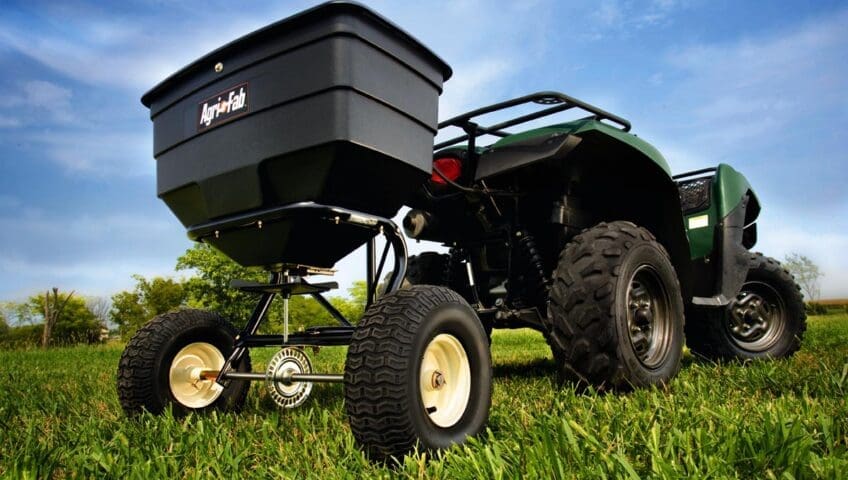Introduction to Lawn Fertilization
Lawn fertilization is a critical aspect of lawn care that involves applying nutrients to the soil to promote healthy grass growth. Proper fertilization enhances the color, density, and resilience of your lawn, making it more resistant to diseases, pests, and environmental stresses. This comprehensive guide will explore the best timing, methods, and practices for lawn fertilization, as well as the pros and cons, and other lawn services that complement fertilization.
Importance of Lawn Fertilization
Grass requires a balanced diet of nutrients to thrive, including nitrogen (N), phosphorus (P), and potassium (K), commonly referred to as N-P-K. These nutrients support various aspects of growth, from root development to disease resistance. Fertilization replenishes the soil with these essential nutrients, ensuring that the grass remains healthy and vibrant throughout the growing season (Scotts, n.d.).
Best Timing for Fertilizing Lawns
The timing of lawn fertilization depends on the type of grass you have and the climate in your region:
- Cool-Season Grasses: These grasses, such as Kentucky bluegrass, fescue, and ryegrass, grow best in cooler temperatures. The optimal times to fertilize cool-season grasses are in early spring and early fall when the grass is actively growing. A light application in late spring can also help sustain growth during the summer (Pennington, n.d.).
- Warm-Season Grasses: Warm-season grasses, such as Bermuda grass, zoysia, and centipede grass, thrive in warmer temperatures. The best time to fertilize these grasses is in late spring to early summer, as they enter their peak growing period. A late-summer application can also help the grass prepare for the cooler months (University of California Agriculture and Natural Resources, n.d.).
Best Methods for Fertilizing Lawns
To ensure even coverage and avoid over-application, the following methods are commonly used for lawn fertilization:
- Broadcast Spreading: A broadcast spreader evenly distributes granular fertilizer across the lawn. This method is effective for large areas and ensures uniform application (Scotts, n.d.).
- Drop Spreading: A drop spreader allows for more precise application of fertilizer, which is ideal for smaller lawns or areas that require careful control, such as near flower beds or walkways (Pennington, n.d.).
- Liquid Fertilization: Liquid fertilizers can be applied using a hose-end sprayer. This method allows for quick absorption by the grass and can be an effective way to apply fertilizer in conjunction with watering (University of California Agriculture and Natural Resources, n.d.).
- Slow-Release Fertilizers: Slow-release fertilizers provide a steady supply of nutrients over an extended period, reducing the risk of over-fertilization and promoting sustained growth (Scotts, n.d.).
Best Practices for Lawn Fertilization
To maximize the effectiveness of lawn fertilization, follow these best practices:
- Soil Testing: Before applying fertilizer, conduct a soil test to determine the nutrient levels and pH of your soil. This information will help you choose the right fertilizer and avoid over-application (Pennington, n.d.).
- Proper Fertilizer Selection: Choose a fertilizer with the appropriate N-P-K ratio for your lawn’s needs. Consider using a slow-release fertilizer to provide consistent nutrients over time (Scotts, n.d.).
- Even Application: Use a spreader to apply the fertilizer evenly across the lawn, following the manufacturer’s recommended application rate. Over-application can lead to fertilizer burn and environmental damage (University of California Agriculture and Natural Resources, n.d.).
- Watering After Fertilization: After applying fertilizer, water the lawn lightly to help the nutrients penetrate the soil and reach the roots. This step also helps to prevent fertilizer burn (Pennington, n.d.).
- Avoid Fertilizing During Dormancy: Do not fertilize lawns during periods of dormancy, as the grass will not absorb the nutrients effectively. Fertilizing at the wrong time can lead to nutrient runoff and wasted resources (Scotts, n.d.).
Pros and Cons of Lawn Fertilization
Fertilization Pros:
- Enhanced Growth: Fertilization promotes vigorous grass growth, resulting in a thicker, healthier lawn (Pennington, n.d.).
- Improved Color: Proper fertilization enhances the green color of your lawn, making it more visually appealing (Scotts, n.d.).
- Increased Resilience: Fertilized lawns are more resistant to diseases, pests, and environmental stresses, such as drought and heat (University of California Agriculture and Natural Resources, n.d.).
Fertilization Cons:
- Risk of Over-Fertilization: Applying too much fertilizer can lead to fertilizer burn, where the grass turns brown and may die (Pennington, n.d.).
- Environmental Impact: Excess fertilizer can run off into waterways, contributing to pollution and harmful algal blooms (Scotts, n.d.).
- Cost: Regular fertilization can be expensive, particularly if professional services are used (University of California Agriculture and Natural Resources, n.d.).

Complementary Lawn Services with Fertilization
Lawn fertilization works best when combined with other lawn care services that enhance its effectiveness and support overall lawn health:
- Core Aeration: Aeration before fertilization helps alleviate soil compaction, allowing nutrients to penetrate deeper into the soil and reach the grass roots. This process improves the efficiency of fertilization and promotes healthier root growth (Pennington, n.d.).
- Overseeding: Overseeding after fertilization provides the new grass with a nutrient-rich environment, ensuring quick germination and establishment. Fertilization supports the growth of the new seedlings and enhances lawn density (Scotts, n.d.).
- Soil Testing: Regular soil testing helps monitor the nutrient levels in your lawn, ensuring that you apply the right amount of fertilizer. This practice prevents over-fertilization and ensures that your lawn receives the nutrients it needs (University of California Agriculture and Natural Resources, n.d.).
- Dethatching: Dethatching before fertilization removes excess organic material from the lawn, allowing fertilizer to reach the soil more effectively. This process also improves water and nutrient absorption, leading to better overall lawn health (Pennington, n.d.).
Conclusion
Lawn fertilization is a key component of a successful lawn care routine. By following best practices, choosing the right fertilizer, and combining fertilization with complementary services like aeration and overseeding, you can achieve a lush, healthy lawn that enhances the beauty of your property. While fertilization requires careful planning and execution, the benefits of a vibrant, resilient lawn make it a worthwhile investment. If your lawn is in need of fertilization services, contact Barefoot Lawn Care today!
References
Pennington. (n.d.). Lawn fertilization basics.
Scotts. (n.d.). How to fertilize your lawn.
University of California Agriculture and Natural Resources. (n.d.). Lawn care and fertilization.

